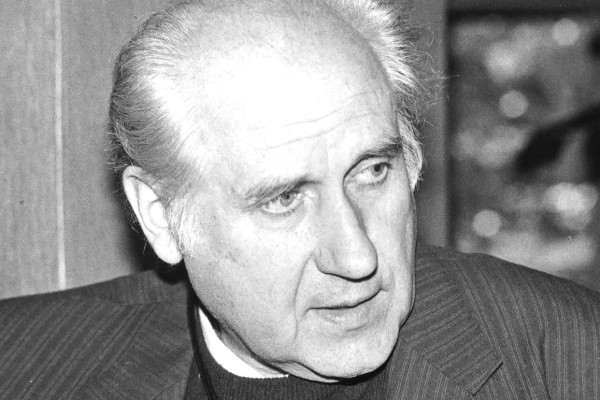
Romualds Kalsons
(07.09.1936 - 15.11.2024 )
I desire expressive Allegros and Prestos!
This statement can be considered to be the composer’s laconic creative motto in a direct, as well as in a figurative meaning. Because Allegro here should be understood as a persistent search for the ideal, clearly developed expression of the form and the content. BIOGRAPHY Romualds Kalsons was born on September 7th, 1936 in Riga. He studied at the Jāzeps Mediņš College of Music (in the choir conducting department), and later enrolled at the Latvian State Conservatory in the composition department, which Kalsons graduated in 1960 (Ādolfs Skulte’s class). In 1971, the composer graduated Jāzeps Lindbergs’ symphony orchestra conducting class. From 1957 to 1973, Romualds Kalsons worked as a sound engineer at Latvian Radio and Television. From 1973 to 2009, the composer taught at the Latvian State Conservatory/Latvian Academy of Music. In 1987, he was elected as a professor. From 1990 to 2001, Kalsons was the head of the Composition Department.
From the 1960s to the 1980s, Romualds Kalsons performed as a conductor with the Latvian National Symphony Orchestra and other orchestras, performing mainly the music of Latvian composers. As a pianist, together with his wife, singer Irēna Kalsone, and other musicians, he gave chamber music concerts in Riga, other places in Latvia, as well as in other countries. Romualds Kalsons is an active member of the Latvian Composers’ Union and has served as the secretary and chairman of this organization.
In 1978, Kalsons was given the title of Honoured Artist, and in 1986 - the title of People’s Artist. In 1996, the composer was presented with the Great Music Award, and in 1997 the Award of the Culture Ministry of the Republic of Latvia.
Expression and images that are psychologically conflicting and encompass many different emotional gradations, as well as a wide range of musical stylistics, characterise Romualds Kalsons’ creative work. The neoclassicist and neoromantic aesthetic dominate in works of different genres written during the 60s and 70s, as well as new compositional techniques of the time, such as serial technique and restricted aleatory. In the 1980s, folklore elements enter his music, and he develops a greater interest in sonoric expression. All three stylistic lines are visible in the creative work of Romualds Kalsons to this day, and those reflect the nucleus of Kalsons’s musical expression – at its core is an often grotesque imagery, concert-like development and a vivid instrumentation. Romualds Kalsons’ Concerto for Violin and Orchestra has had great success internationally, as well as other works like the Concerto for Clarinet and Chamber Orchestra, works for symphony orchestra such as Mozaīka (Mosaic), Kāzu dziesmas (Wedding Songs), Poēma fantāzija (Poem Fantasy), the Second Symphony for Chamber Orchestra (Somu [Finnish]), and other works.
Jānis Kudiņš
